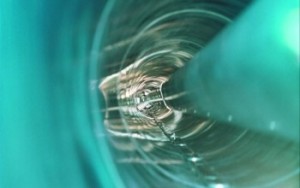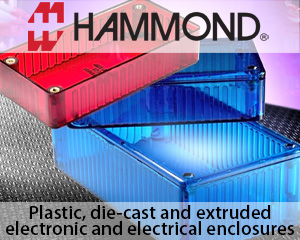Siemens is bringing electricity to the surface from the world’s deepest arch-dam turbines. The dam of the Jinping-1 Hydropower Station in China’s Sichuan province is  305 meters tall; the turbines are located 230 meters deep. The facility will have a total power output of 3.6 gigawatts. In order to transport this huge amount of energy up out of the mountain, Yalong Hydro is using gas-insulated transmission lines (GIL) from Siemens. This technology is especially well suited for the transmission of large amounts of electricity in restricted spaces.
305 meters tall; the turbines are located 230 meters deep. The facility will have a total power output of 3.6 gigawatts. In order to transport this huge amount of energy up out of the mountain, Yalong Hydro is using gas-insulated transmission lines (GIL) from Siemens. This technology is especially well suited for the transmission of large amounts of electricity in restricted spaces.
Gas-insulated tubular lines can transmit up to 5,000 amperes at up to 550 kilovolts (kV). Every line consists of two concentric aluminum tubes. The space between the inner conductor and the earthed outer tube is filled with insulating gas. GIL systems not only transmit huge amounts of electricity in very restricted spaces, they are also fireproof – unlike standard power cables. As a result, GILs are a safe and easy-to-install solution for the transmission of electricity out of underground power stations or tunnels. The Jinping-I transmission line consists of a total of three parallel GIL systems, each of which has three monopolar tubular lines that lead vertically up at the dam. ![]()
Each system can transport 2,200 megavolt-amperes of output at 550 kV. Including the connection to the overhead power line, Siemens installed a total of 3.2 kilometers of tubular transmission lines. For the assembly of the transmission lines, the company set up special dust-free welding areas offering cleanroom conditions at the dam construction site. The welded seams of the aluminum tubes have to be absolutely gastight to ensure a long service life for the transmission lines. An automated orbital welding technique is employed to connect the tubes, and ultrasound is used to check that all of the seams are gastight. ![]()
GIL technology has been used for decades. In 1975 Siemens installed its first GIL system at the Wehr hydropower station in the Black Forest. This line is still in operation. In addition to a high transmission capacity and level of safety, GIL systems also have lower transmission losses because the effective conductor cross-section is larger than that of overhead lines and cables. Another advantage of GILs is their good electromagnetic compatibility (EMC), because the conductor current induces an equivalent countercurrent in the housing. As a result, the electromagnetic field is negligible outside the GIL, which means that no electromagnetic shielding is needed even for EMC-sensitive areas (e.g. near residential areas, air surveillance systems, or computer centers). GILs solve the transmission problem that arises whenever overhead lines cannot be built due to structural, electrical or environmental reasons. In this way, they also help make Germany’s energy transition possible
One of the world’s most advanced pilot boats contains a hybrid drive from Siemens. Called the Explorer, the vessel is a SWASH (Small Waterplane Area Single Hull) vessel with a torpedo-shaped float located centrally underneath the hull. The boat’s propulsion system is also located in this tube. The vessel remains stable in the water even in rough seas and is relatively light, thus reducing fuel consumption. The hull contains a flexible and compact EcoProp Hybrid system, which ensures efficient and environmentally compatible operation in both the diesel and the electric mode. The hybrid drive system is economical in all operational profiles. The diesel engine is used to propel the boat. Surplus energy can be used by a generator to supply the vessel with electricity. The boat is currently being tested on the Elbe River.
The Explorer is a further development of SWATH (Small Waterplane Area Twin Hull) craft, which have two torpedo-shaped floats underneath the water. These kinds of vessels are less susceptible to wind and waves than other designs so that pilots can safely go from the boat to the ship they have to direct even in rough seas. In the Explorer, the two lateral floats are replaced by a single tube in the middle. The boat has two outriggers at the sides to keep it stable. The new design makes the vessel lighter and more agile. Good maneuverability is important because the pilot boat and the ship to be directed have to maintain their relative positions when the pilot is transferring between the two. The speeds can be fairly high, and the large container ships on the Elbe River travel at eight or more knots, for example. ![]()
The Explorer’s EcoProp Hybrid propulsion system is based on the ELFA drive system that was originally developed for buses. At the heart of the system is an electrical machine that can serve either as a motor or a generator. When the boat is being propelled by the diesel engine, the latter also supplies energy to the generator. If electric operation is selected, the propeller is instead driven by the electric motor. In this mode, the boat can attain one third of its top speed of 17 knots (approximately 31 kilometers per hour). ![]()
The boat’s ability to travel a longer distance solely on electricity is important for a number of reasons, including the fact that the centrally located float only contains a single diesel engine. However, some applications require a second propulsion system to be on board for safety reasons. In the Explorer, this role is performed by the electric motor. ![]()







